Kia expects its all-new Tasman to be a key player in Australia’s highly competitive ute segment. And to its credit, the Korean manufacturer has created its contender from scratch, rather than taking the easier platform-sharing route favoured by some rivals.
However, judging by feedback from numerous locals during our test, the jury is out on whether Aussies will warm 'en masse' to its bold styling and confronting appearance, which tends to distract from the capable vehicle beneath.
So, given our tradie focus, we recently spent a week in the lowest-priced entry point for Tasman dual-cab ute ownership, to see how it measures up as a tool-of-trade for tradies, farmers or fleets wanting a back-to-basics workhorse.
-
Take that China! 2026 Kia K4 hatch to hit the small-car sweet spot against the MG5, Toyota Corolla, Mazda 3 and Hyundai i30 as Kia doubles down on affordability
-
The Kia Tasman effect! How the big diesel-powered ute has made it possible for the 2026 Kia EV4 hatch and sedan to arrive in Australia to make life hard for the Tesla Model 3 and BYD Seal electric vehicles
-
Next-gen Mazda CX-5 rival takes shape: 2026 Hyundai Tucson design comes together but when will this popular Toyota RAV4 competitor come to Australia?
Kia Tasman 2026: S (4X2) (0.9T) Black Fender
| Engine Type | Diesel Turbo 4, 2.2L |
|---|---|
| Fuel Type | Diesel |
| Fuel Efficiency | 7.4L/100km (combined) |
| Seating | 5 |
| Price From | $42,990 |
Does it represent good value for the price? What features does it come with?
8 / 10
The Kia Tasman range offers a choice of cab-chassis and ute body styles and five model grades comprising S, SX, SX+, X-Line and premium X-Pro.
Our S 4x2 test vehicle represents the bottom rung of the model ladder, for those not needing the all-terrain capabilities of its S 4x4 sibling and other Tasman models. However, it does share the same 2.2-litre four-cylinder turbo-diesel and eight-speed automatic transmission, for a list price of $42,990.

That's more than competitive with equivalent dual-cab ute rivals like the Ford Ranger XL Hi-Rider 2.0L auto 4x2 ($43,530), Toyota HiLux Workmate Hi-Rider 2.4L auto 4x2 ($44,820) and Isuzu D-Max SX High-Ride 2.2L auto 4x2 ($44,200). Our example is also finished in 'Steel Gray' which is a premium paint option that adds $700 to this price.
The S 4x2 comes standard with 17-inch black steel wheels and 265/65 R17 tyres with a full-size spare, automatic LED headlights/daytime running lights/tailgate-mounted rear stop-lights, front/rear parking sensors, rear bumper corner-steps, body-coloured/heated door mirrors, body-coloured doorhandles with pocket lights (front doors only) and more.
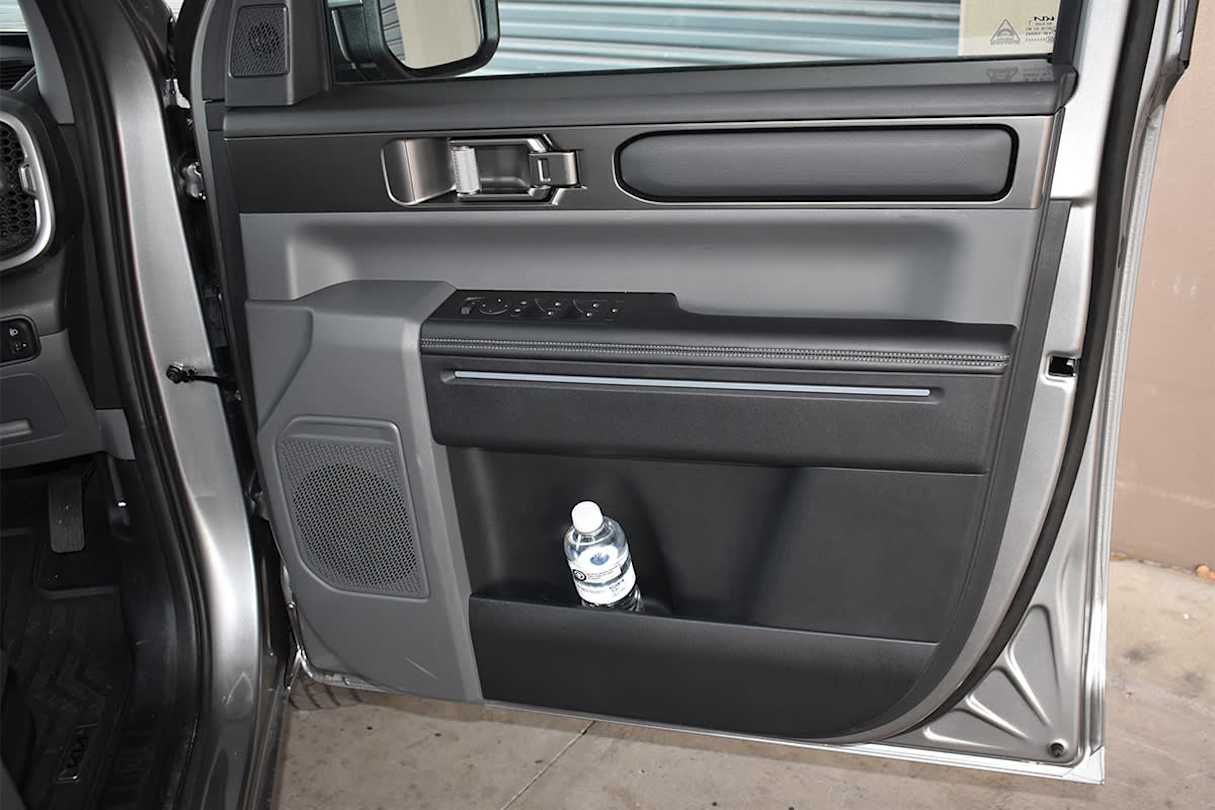
Accessing the cabin using the smart key reveals a premium steering wheel and gear knob, remote start, six-way manually adjustable driver’s seat, dual-zone climate control, 12v socket and USB-C ports, tyre pressure monitoring, integrated trailer brake controller, reversing camera and more.
There’s also a six-speaker audio system and what Kia calls the ‘Integrated Panoramic Display’ which in one expansive digital screen combines a configurable 12.3-inch driver’s instrument display, 5.0-inch climate control display and 12.3-inch multimedia touchscreen display.
Is there anything interesting about its design?
8 / 10
The Tasman is claimed to have more Australian input than any previous Kia model and it certainly has a distinctive ‘Australianised’ competence in the way it performs (see Driving).
It also follows a reassuringly conventional engineering path with its turbo-diesel drivetrain, body-on-ladder-frame-chassis, twin wishbone/coil-spring front suspension, leaf-spring live rear axle, four-wheel disc brakes and electric power-assisted rack and pinion steering.
The Tasman is no shrimp either, as it shares the same 3270mm wheelbase as the market-leading Ford Ranger and is slightly longer and wider.

Work-focused light commercials are often armoured with unpainted plastic in areas prone to bumps and scrapes. The Tasman S 4x2 follows convention here too with dark grey plastic prominent at the front, rear and along the sides, where unusual ‘eyebrows’ are positioned above the wheel-arches which every onlooker we spoke to said looked better in body colour.
The S 4x2 shares the same 206mm ground clearance, 800mm wading depth and approach/ramp breakover/departure angles as its S, SX and SX+ 4x4 siblings. However, they also share a shallow approach angle of only 20 degrees, which is considerably less than its previously-mentioned rival 4x2 models.
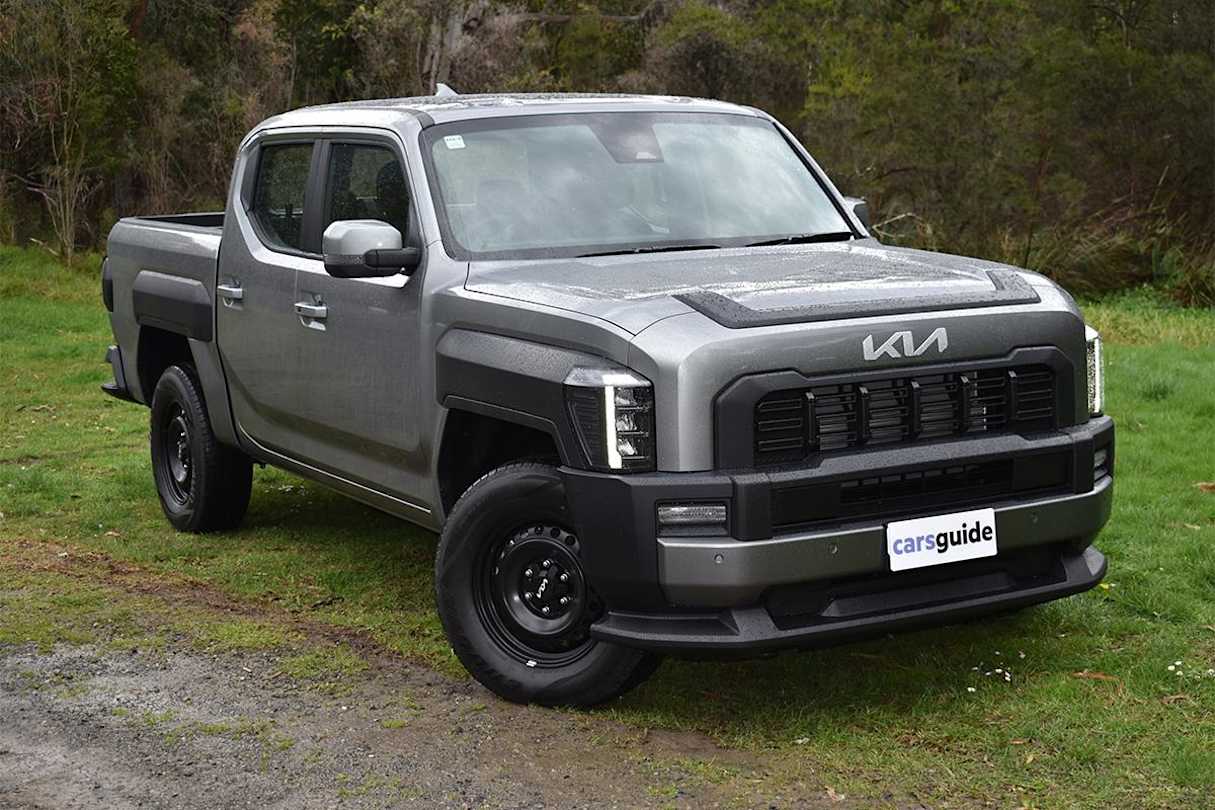
The lower ‘spoiler’ section of the front bumper seems largely responsible for this, as it looks too close to the ground and vulnerable to damage from a farmer’s rocky creek-bed crossing or a tradie’s rugged worksite.
The black and grey interior is a functional and spacious design (see Practicality) which looks and feels more upmarket than typical base-model offerings. It has the coolest doorhandles we’ve seen in a ute, which although made of a composite material look like machined steel, complete with a lathe-like knurled finish on the finger-pulls.
There’s also soft-touch surfaces on the door armrests to optimise elbow comfort plus contrasting hard-surface finishes including honeycomb and diagonal patterns, two-tone fabric seat trim with exposed stitching and neat embossed grooves across the seat-facings.
How practical is its space and tech inside?
8 / 10
With its 2126kg kerb weight and 3250kg GVM, our test vehicle has a mighty 1124kg payload rating which is the largest available in the Tasman fleet. And up to 100kg of that can be carried on the roof.
Like its 4x4 siblings, the 4x2 model is rated to tow up to 3500kg of braked trailer but with its 6200kg GCM (or how much it can legally carry and tow at the same time) the payload would need to be capped at 574kg (a reduction of 550kg) to avoid exceeding the GCM.
Although few (if any) owners would need to tow 3500kg, it’s important to be aware of these numbers if you did to avoid overloading. Even so, almost 600kg of payload would still allow for a crew of five and their gear when towing the maximum trailer weight, so this is a useful set of numbers for many working roles.
Internally the load tub is 1573mm long, 1600mm wide and 543mm deep with a load volume exceeding 1.3 cubic metres. And with 1186mm between the rear wheel-housings, it can carry either Aussie or Euro pallets.
The tailgate can be opened remotely and its hinges provide opening/closing assistance. There’s no standard tub-liner but it comes with four load-anchorage points positioned at around mid-height.
There’s ample cabin space for the driver and front passenger plus storage including a bottle-holder and bin in each door, a single glovebox and a centre console with a large open tray at the front with USB-C ports, two cupholders in the centre and a large box at the back with an internal 12v socket and padded lid which doubles as a comfy elbow rest.
Rear cabin access is enhanced by doors that open to almost 90 degrees and Kia claims the rear bench seat offers best-in-class legroom, headroom and shoulder-room. Even so, it would still be a shoulder squeeze for three big Aussies (like all dual cabs short of a full-size US pick-up) so a limit of two would be preferable for long trips.
Rear storage includes a bottle holder and bin in each door plus pockets on the front seat backrests and a slender pocket on the rear of the console ideal for storing phones. A couple of USB ports would be handy here too, but we are talking base-grade.
There’s also no fold-down centre armrest at this level but the bench seat's 60:40-split base cushions can swing up and be stored vertically if more internal cargo space is required, or to access a full-width bin that can store heaps of stuff away from prying eyes.
What are the key stats for its engine and transmission?
8 / 10
All Tasmans share the same 2.2-litre four-cylinder turbo-diesel that produces 154kW of power at 3800rpm and 440Nm of torque across a 1000rpm-wide band between 1750-2750rpm, which showcases flexibility that's well suited to hauling and/or towing heavy loads.
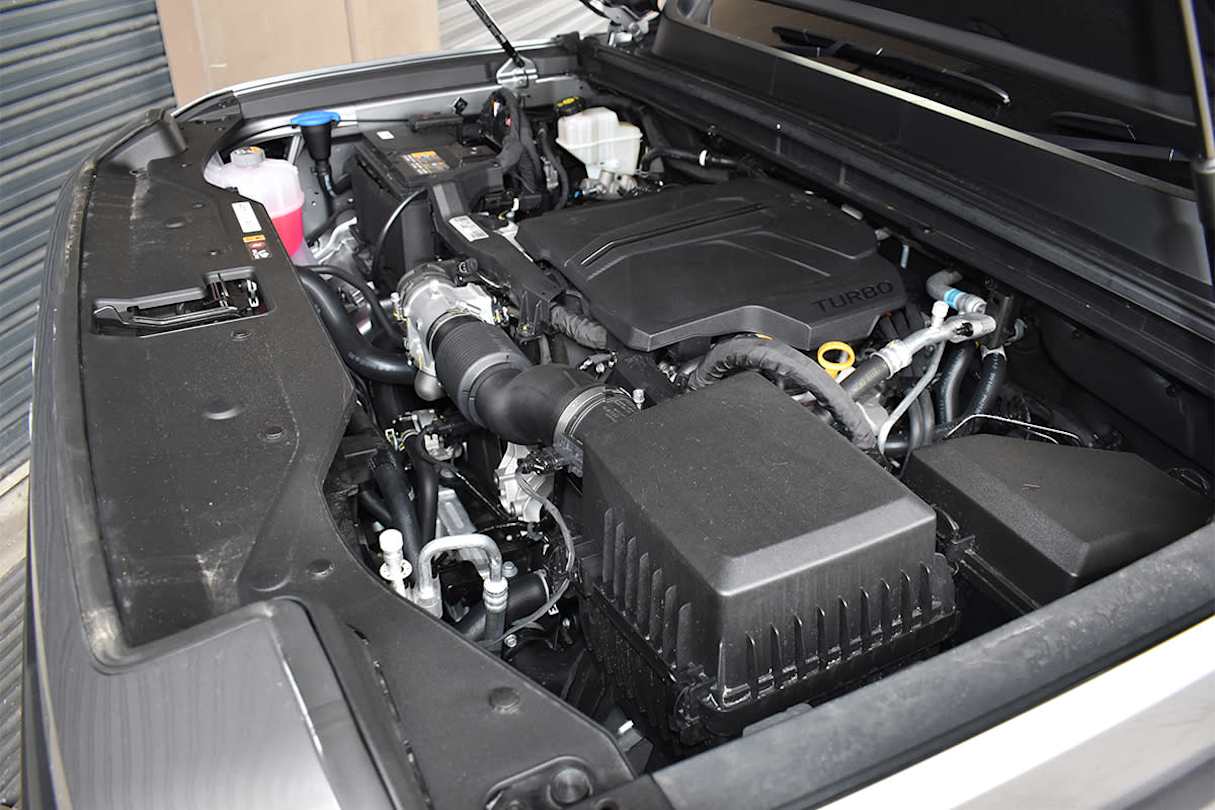
This engine is paired with an eight-speed torque converter automatic offering the choice of sequential manual-shifting and five selectable drive modes comprising Normal (default), Eco, Sport, Tow and MyDrive with the latter allowing custom settings.
What is its fuel consumption? What is its driving range?
Kia claims combined average consumption of 7.4L/100km and the dash display was showing 8.3 when we stopped to refuel at the completion of our 591km test, which included suburban, city, highway and backroad driving of which about 120km was hauling its near-maximum payload.
Our own figure, calculated from fuel bowser and tripmeter readings, came in higher again at 9.6 which is still within the usual 2-3L/100km discrepancy between lab-based official figures and real-world numbers. That's also excellent sub-10L economy for a vehicle weighing more than two tonnes operating mostly in urban settings.
So, based on our own consumption figure, you could expect a realistic driving range of more than 800km from its 80-litre diesel tank.
What’s it like to drive?
8 / 10
There’s no cabin side-steps but large handles on the A and B pillars assist climbing aboard. People of most shapes and sizes can find a comfortable driving position given its supportive seating, large left footrest and height/reach-adjustable steering wheel featuring a flat top to optimise forward vision and a flat base to provide ample torso room.
It exudes solidity in its engineering and build quality along with excellent steering feel, handling and braking. It also has energetic acceleration and all-round performance.
We trialled the sequential manual-shifting and selectable drive modes but spent most of our test in the ‘Normal’ default setting as it provides the best compromise. It’s also a low-stressed highway cruiser requiring only 1600rpm to maintain 100km/h and little more for 110km/h.

The unladen ride quality is firm, as you’d expect given its big payload rating, but it’s more supple than some other 4x2 one-tonners we’ve tested without loads.
To test its GVM rating we forklifted 890kg into the load tub, which combined with our crew of two equalled a total payload of 1070kg which was only about 50kg below its legal limit.
Under this weight, the large bump-stop rubbers fitted to the rear leaf-springs engaged with the chassis rails above them very early in compression, which eliminated the hard thuds experienced with traditional designs that ‘bottom-out’ over large bumps and through dips.

The Tasman proved to be a competent heavy load-hauler in ‘Normal’ drive mode, maintaining its hearty performance and sure-footed handling with more than one tonne on board.
It also made light work of our 13 per cent gradient, 2.0km-long set climb at 60km/h, self-shifting down to third gear to easily haul this load to the summit.
Engine-braking on the way down, in a manually selected second gear, was equally strong until the engine reached 4000rpm on overrun (no redline is displayed) and promptly shifted up a gear.

These engine-protection protocols are increasingly common in light-commercial vehicles (both utes and vans) but can spring a surprise when you’re ‘leaning’ on the engine to restrain its payload during steep descents and it suddenly shifts up a gear and starts running away from you. Even so, the Tasman’s four disc brakes easily maintained the posted 60km/h speed limit for the remainder of the descent.
Overall, we struggled to find fault in the driving experience apart from one baffling oversight in cabin design, given the steering wheel’s rim blocks the driver’s view of the climate control screen located between the instrument and multimedia screens.
This is distracting for drivers, given climate control settings are among the most-adjusted cabin functions. Hopefully this will be corrected in future upgrades.
Warranty & Safety Rating
What safety equipment is fitted? What safety rating?
8 / 10
The Tasman S 4x2 and X-Line/X-Pro 4x4 models are yet to be ANCAP-rated, but other grades earned the maximum five stars when tested this year.
There’s a full suite of airbags, auto emergency braking (AEB) with multiple object detections, blind-spot monitoring, rear cross-traffic alert, trailer stability assist, driver attention alert, smart cruise control, lane-keeping and lots more.
Junior tradies get ISOFIX and top-tether child-restraint anchorages on the two outer rear seating positions.
What warranty is offered? What are its service intervals? What are its running costs?
9 / 10
It comes with Kia’s excellent seven-year/unlimited km warranty, plus 12 months complimentary roadside assistance which is renewed each year for up to eight years if serviced by an authorised Kia dealer.
Scheduled servicing is every 12 months/15,000km whichever occurs first. Capped-pricing applies to the first seven scheduled services up to seven years/105,000km totalling $3971, or a pay-as-you-go average of $567 annually. Alternatively, Kia offers pre-paid servicing packages with cost savings for three, five or seven-year terms.
There are currently more than 160 Kia dealerships across Australia, which also provide vehicle servicing.
Verdict
Ute buyers prepared to look beyond the Tasman’s polarising appearance will discover a competent all-rounder. It has its faults like any ute but boasts high standards of engineering, build quality, interior design and performance that make it a worthy new competitor in this space.






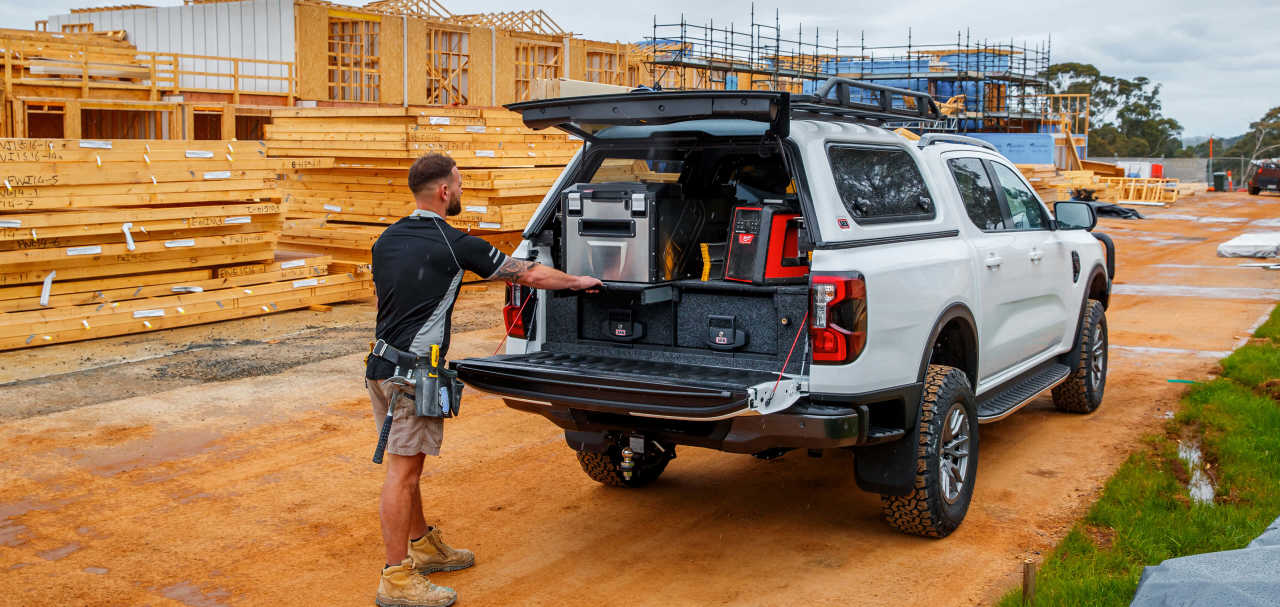

.jpg)









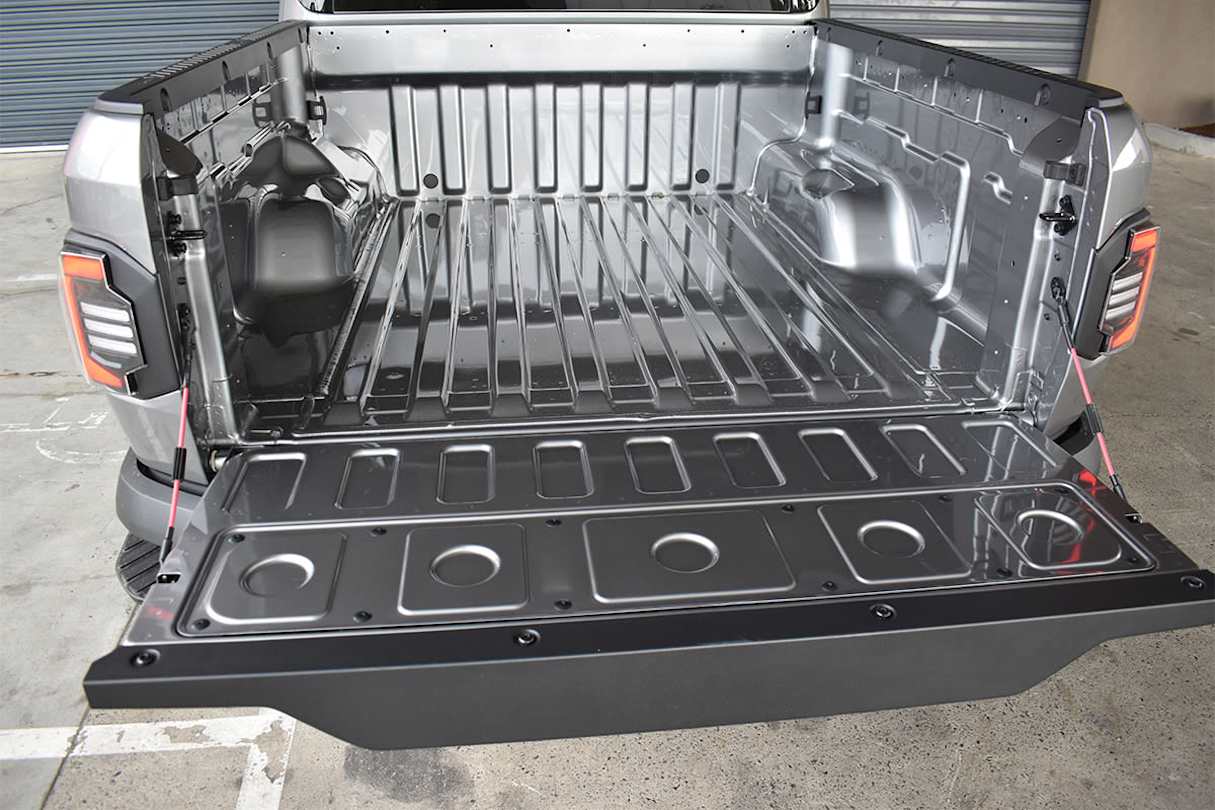









.png)

.png)










.jpg)
.jpg)
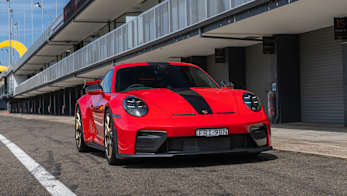

.jpg)
